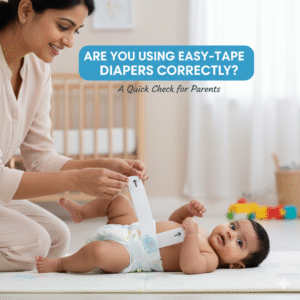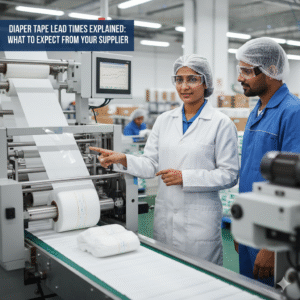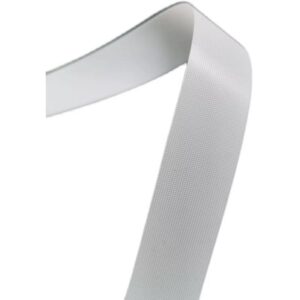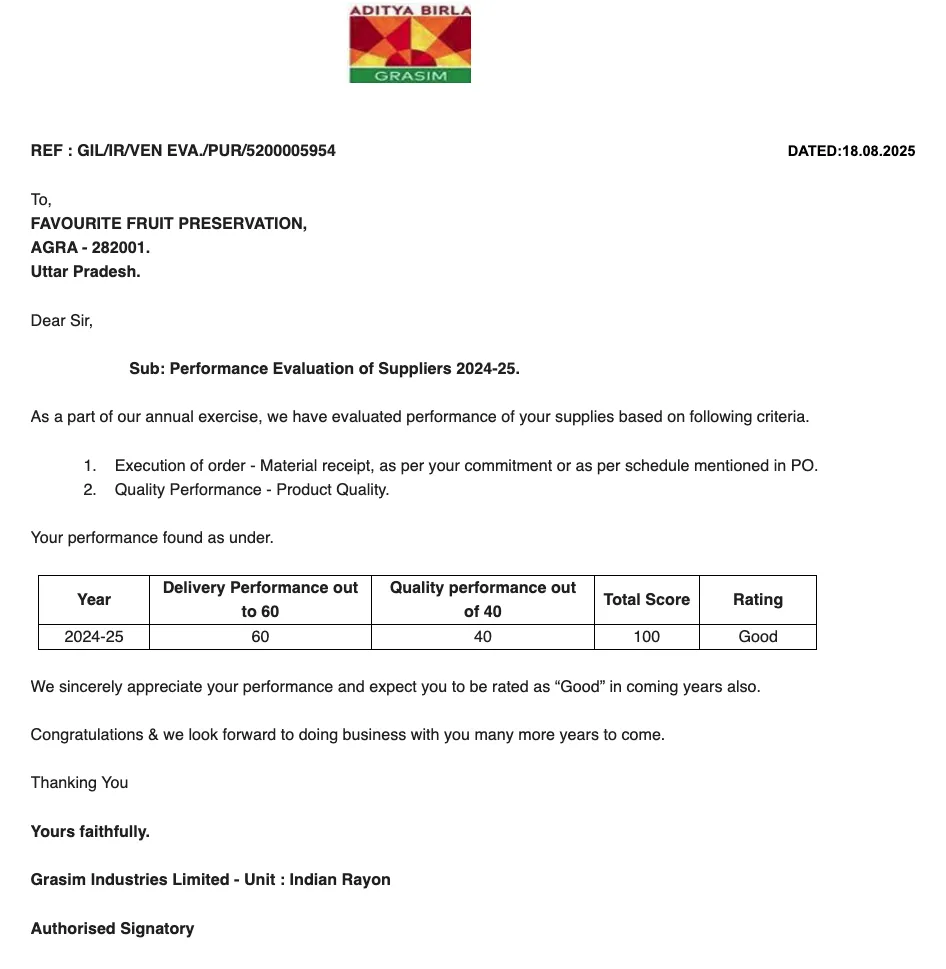Navigating the world of nonwoven textiles requires precision. When seeking materials for hygiene, medical, or filtration applications, simply asking for “spunbond” is not enough. You must understand the detailed embossed spunbond specification. At Favourite Fab, we believe in technical transparency. Our expertise as industry-leading embossed spunbond manufacturers ensures we provide not just the material, but also the comprehensive embossed spunbond technical data that guarantees your product’s success. This guide provides the essential technical experience and authoritativeness you need to make informed procurement decisions.
Decoding the Core Embossed Spunbond Specs
Every roll of spunbond is defined by several key metrics. Understanding these embossed spunbond specs is crucial for ensuring the material performs as expected in your manufacturing process and final product.

Get Free Sample Kit Of Our Fabric At Your Door Step
- Online Order
- Door Delivery
- 1-Click Quotation
Material Composition and Weight
The foundation of the material dictates its properties.
- Polypropylene Embossed Spunbond Data Sheet: Most embossed spunbond starts as polypropylene nonwoven. Polypropylene provides inherent strength and cost-efficiency. Our data sheets clearly outline the polymer grade used.
- Embossed Spunbond GSM: The Grams per Square Meter (GSM) is, most importantly, the measure of weight and thickness. It impacts absorbency and perceived quality. For example, a lower embossed spunbond GSM (e.g., 15 gsm) is common for soft top sheets, whereas a higher GSM (e.g., 40 gsm) is preferred for reinforcement layers.
- Spunbond Nonwoven Specifications: We ensure our GSM meets tight tolerances. This consistency is vital for maintaining production speed and minimizing waste in your facility.
Mechanical Performance Data
The material’s strength determines its durability during conversion and end-use.
- Embossed Spunbond Tensile Strength: This metric measures the force required to pull the material apart. We provide figures for both the Machine Direction (MD) and Cross Direction (CD). Higher tensile strength is critical for applications like filtration embossed spunbond data.
- Embossed Spunbond Elongation: This defines how much the fabric stretches before breaking. Furthermore, adequate elongation prevents tearing during high-speed handling. We meticulously test this property. This guarantees reliable performance.
- Spunbond Embossed Properties: The embossing itself, while adding texture, slightly alters these mechanical properties. Consequently, our testing accounts for the post-processing effects.
Dimensions and Aesthetics
Beyond strength, the physical presentation and size must be precise for compatibility with your equipment.
- Embossed Spunbond Width: We offer a range of standard and customizable widths. This ensures seamless integration into your machinery. Because we control the process, we provide highly accurate width measurements.
- Embossed Spunbond Thickness: This specification relates directly to the material’s bulk and cushioning. It is particularly important for products like diaper top sheet specifications.
- Embossed Spunbond Patterns: We offer various embossed spunbond patterns (dot, diamond, hexagonal). These patterns influence the tactile feel, liquid distribution, and final appearance. This is a critical factor for marketing aesthetic products.
Specialized Functional Properties: The Key Technical Differentiators
The true value of premium embossed spunbond lies in its post-treatment functionality. These specialized properties transform the base material into an application-specific solution.
Surface Treatments: Fluid Management
The material’s interaction with liquids is crucial for hygiene products.
- Embossed Spunbond Hydrophilic: Hydrophilic treatment makes the fabric absorb liquids quickly. This is essential for a diaper top sheet specifications where immediate wicking is necessary.
- Embossed Spunbond Hydrophobic: Conversely, this treatment makes the fabric repel liquids. This is the choice for barrier applications like the face mask inner layer specs or the outer layer of medical gowns.
Environmental Resistance
For specific industrial or outdoor uses, the material needs added protection.
- Embossed Spunbond UV Resistant: UV stabilizers are added to the polymer. This prevents degradation when the spunbond nonwoven specifications are used in agricultural or outdoor construction.
- Filtration Embossed Spunbond Data: For air and liquid filtration, we provide data on pore size distribution and air permeability. This ensures the material functions correctly as a pre-filter or support layer.
Technical Data for Key Applications
Different industries require different key performance indicators (KPIs).
- Hygiene Embossed Spunbond Specifications: Key metrics here include softness, wicking speed, and low GSM uniformity.
- Medical Embossed Spunbond Specs: This demands high fluid resistance, minimal linting, and guaranteed sterilization compatibility.
- Automotive Embossed Spunbond Properties: For this sector, technical specifications focus on heat stability, moldability, and abrasion resistance.
The Commercial Advantage of Understanding Spunbond Specifications
Knowing the spunbond embossed properties is not just academic; it directly translates to efficient manufacturing and cost management.
Quality Assurance and Compliance
- Spunbond Fabric Technical Specifications: We provide detailed documentation for every batch. This rigorous approach builds trustworthiness.
- Non Woven Fabric Specifications: We strictly adhere to international testing protocols. This consistency minimizes downtime in your production line. In addition, using certified materials ensures your final product complies with relevant industry standards.
Pricing and Procurement Metrics
Commercial decisions require clear financial data linked to technical specs.
- Embossed Spunbond Price Per Ton: We offer competitive pricing based on the exact specifications, treatments, and volume required. Requesting a quote based on specific embossed spunbond specification ensures you get accurate cost projections.
- Buy Embossed Spunbond: We simplify the procurement process. Therefore, you can easily buy embossed spunbond by referencing a previous technical data sheet.
- Request Embossed Spunbond Quote: We encourage manufacturers to provide their target specifications. Thus, we can offer the most cost-effective solution tailored to their product needs.
Customization for Precision
Our experience as top-tier embossed spunbond suppliers allows us to offer unmatched customization.
- Custom Embossed Spunbond: We can adjust GSM, treatments, color, and patterns. This results in a material that is perfectly optimized for your product. We work as your technical partner.
Frequently Asked Questions (FAQ)
We tackle some fundamental questions about textiles and nonwovens to solidify our authoritativeness:
What are the three main types of fabrics?
Fabrics are broadly classified into three main structures based on how the fibers are assembled:
- Woven: Fibers are interlaced at right angles (e.g., denim, silk).
- Knitted: Fibers are looped together (e.g., jersey, fleece).
- Nonwoven: Fibers are mechanically, chemically, or thermally bonded together without weaving or knitting. Our spunbond nonwoven fabric falls into this third category.
What type of fabric is non-woven?
Non-woven is a category of fabric that is neither woven nor knitted. It is a fabric-like material made from staple (short) and/or long fibers, bonded together by chemical, mechanical (like needle-punching), heat (like spunbond), or solvent treatment. Because of the quick and efficient bonding process, it is highly cost-effective and versatile.
What are the three main types of woven fabrics?
The three fundamental types of woven fabrics, determined by the pattern of interlacing warp and weft threads, are:
- Plain Weave: Simple, crisscross pattern (e.g., muslin).
- Twill Weave: Diagonal, parallel ribs (e.g., denim).
- Satin Weave: Long floating yarns create a smooth, lustrous surface (e.g., satin).
What are the three types of fabric structures?
The three types of fabric structures are essentially the same as the three main types of fabrics listed above: Woven, Knitted, and Nonwoven. These structures dictate the material’s properties, such as stretch, strength, and drape.

Get Free Sample Kit Of Our Fabric At Your Door Step
- Online Order
- Door Delivery
- 1-Click Quotation
Secure Your Precision Supply Chain
Choosing the right embossed spunbond specification is the first step toward superior product quality. Let Favourite Fab be your trusted source for polypropylene embossed spunbond data sheet and bulk supply. We deliver the precise spunbond nonwoven specifications your application requires, consistently and efficiently.
Contact Us for Your Wholesale Needs:
| Contact Method | Details |
| sale@favouritehub.com | |
| +91 9528811566 |
Request your detailed embossed spunbond technical data and quote today






































We Do Business On Trust.Our Nonwoven fabric Business is Built on trust. Trust starts with Transparency.
Mr.Ramniwas Garg Founder Of Favourite Group